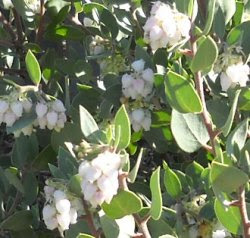
A group of friends and family received a tour of Wolff Vineyards yesterday. A previous post of SLO Today gave only a taste of what Jean-Pierre Wolff Ph.D. has to say in person about his sustainable operation outside of San Luis Obispo. Ahead of time, we knew that work was taking place to recreate curves and ascending pools in the creeks on the property, and that a turtle refuge was also in place.
Our surprise and delight was learning the degree to which Dr. Wolff has labored on his 125 acres of grapes to promote sustainable wine. The care and thoughtfulness and planning were amazing to all of us. No traditional pesticides are used on the property but all kinds of care is taken to discourage them.
His vineyards are not watered except by rain, but he carefully plants red varietals on the slopes and has saved the thirty-five year old Chardonny vines on the flat by conserving and holding water and preventing it from running off into the creeks. For example, he has built up his roads throughout his property so they promote the retention of rain water in the water table. One of his first moves eleven years ago when he acquired the vineyard, was to cut the lateral roots 3 feet down to encourage deeper growth of taproots, and thus better survival of these vines in dryer years.
He composts at the ratio of 1.5 for the grape tonnage he harvests. Much of this is in the form of gypsum from recycled drywall, but he also plants lupines and other nitrogen fixing plants in between the rows of vines.

His pruning techniques are also an integral part of his sustainable methodology.
Many of our attendees yesterday were impressed enough to either buy wine or join the wine club. Our country is lucky to have such a dedicated environmentalist in our midst. I urge any of you with an interest in this subject to seek out his talks or tours in the future. For more on Dr. Wolff see this article.





































